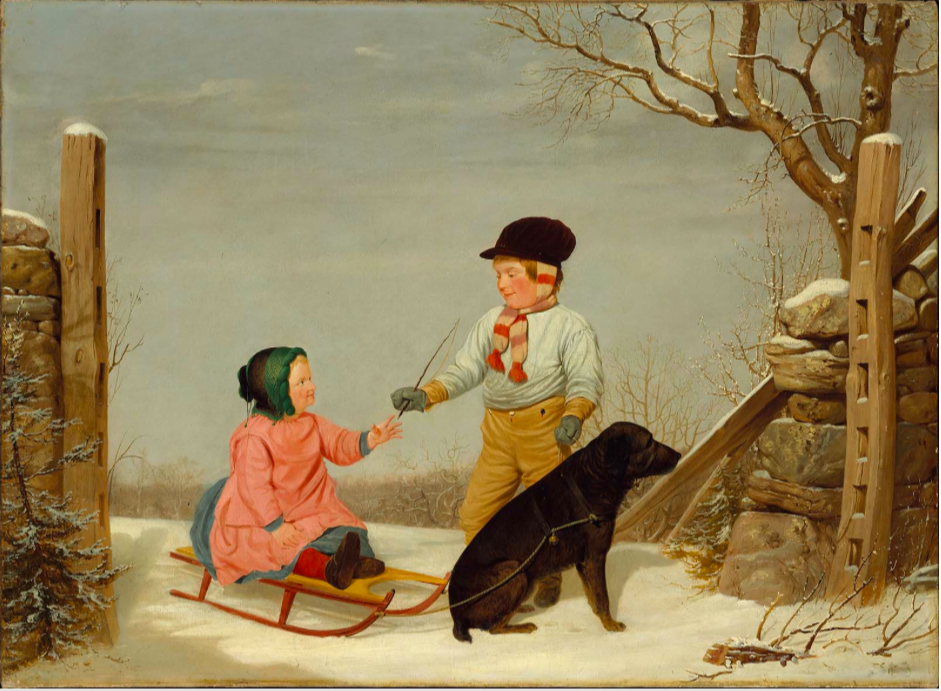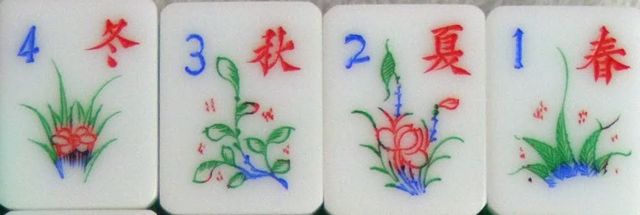These three photographs are beautiful sides of a Mahjong box that was in the collection of the Japanese Mahjong Museum, and scanned from their catalog. (If you ever can get one of the catalogs of their collection, do so. The sets are magnificent, as are the photographs.)
The children are enjoying their time together, with the groupings beautifully framed by the outside vines winding their way around the sides of the box. The children and vines are made of mother-of-pearl, inlaid into the box, and you can clearly see how the box was carved out for the inlays in the above photograph, which has a few pieces missing. You might notice the one boy with a firecracker in his hand, in the lower left box. The details on the children's faces are just delightful-it's amazing how the smallest etch in the mother-of-pearl could bring these little faces to life.
In Chinese art children were treated as beings who, just by being themselves, could bring great joy to the viewer. And their images carried with them the hopes that the viewers would have many children.
Several of you noticed in the earlier post that the Chinese artists portrayed children the way they actually were, as opposed to the way in which European and American artists handled the subject. The following work was painted in 1760, and is in the Colonial Williamsburg collection. Interesting how serious the children look, even when holding a pet squirrel.
Above is the Sleigh Ride by James Goodwyn Clonney done about 1845, from the collection of the Museum of Fine Arts Boston. At least here there is a bit of smile on the faces of both children.
And from the Metropolitan Museum we have The Golden Age by Jean-Baptiste Joseph Pater (French, Valenciennes 1695–1736 Paris). Although children were portrayed in a bit more realistic way by this French artist, they lack the rambunctiousness of the Chinese ones. It is almost as if the Chinese artists delighted in the naughtiness of children!
We started this post with the beautiful almost one hundred year old mother-of-pearl mahjong box from the Japanese Mahjong Museum, and we will end the post with a very new set, carved by one of the few people who is carrying on the tradition of designing and creating Mahjong sets, Dee Gallo from Red Coin Mahjong. Dee's newest set's theme is based on money, a reference to the original basis for the three suits of the game: coins, (dots) strings of coins (bams) , and lots of coins (craks). On one bouquet of Flowers she features children, very much like the ones we saw on the box, holding oversized coins. You can see the details she included: each child is an individual, with unique clothing and expressions. The coin on tile 2 shows bats flying around the center of the coin. The font of the numbers she uses on the tiles add to the theme of the set: copper plate. Her artistic talent and creativity harken back to the days of old, when master craftsmen created mahjong works of art on tiny tiles, with sets referencing different aspects of Chinese lore and culture.
To see more of Dee's work, click here

























































